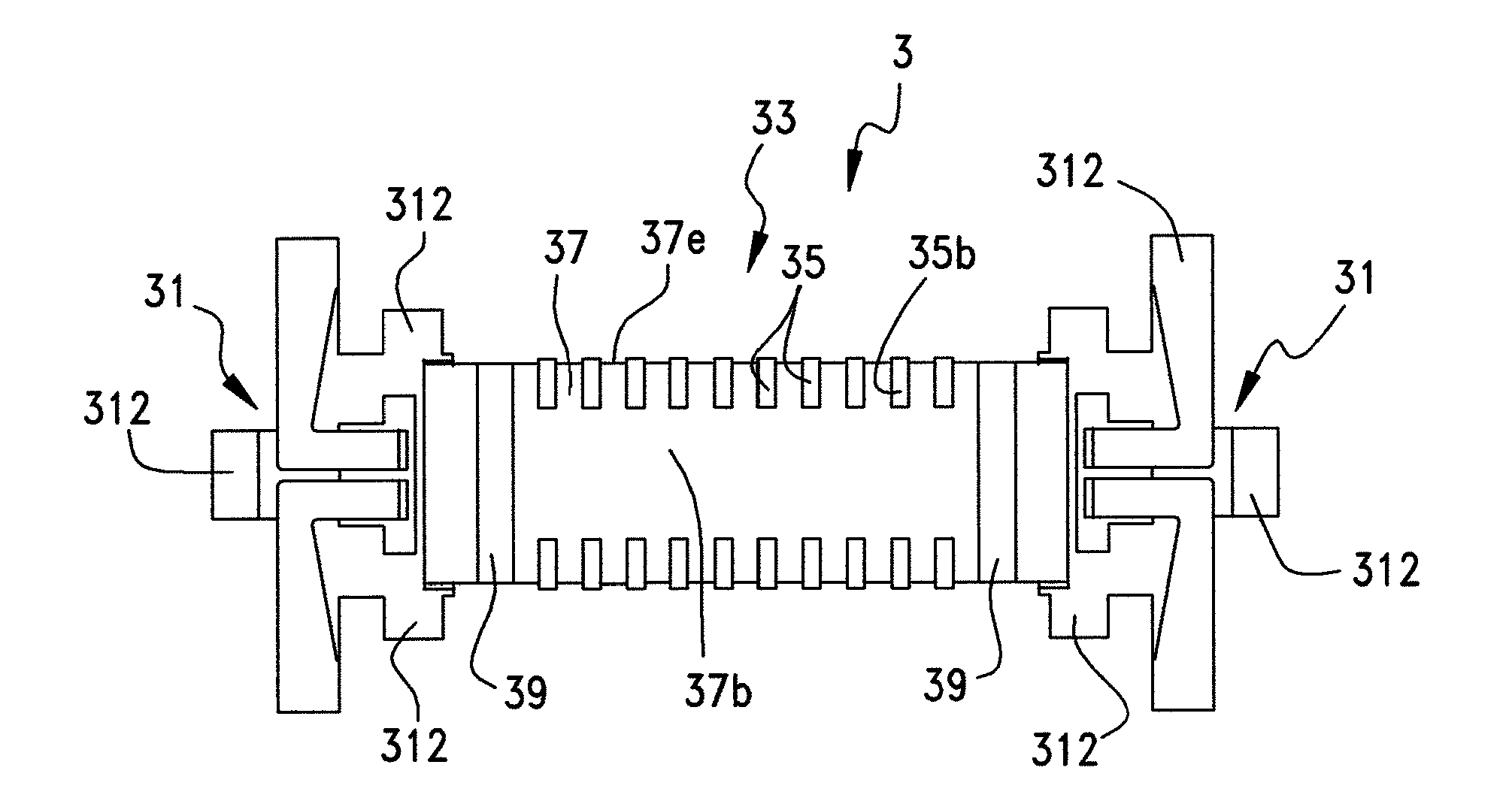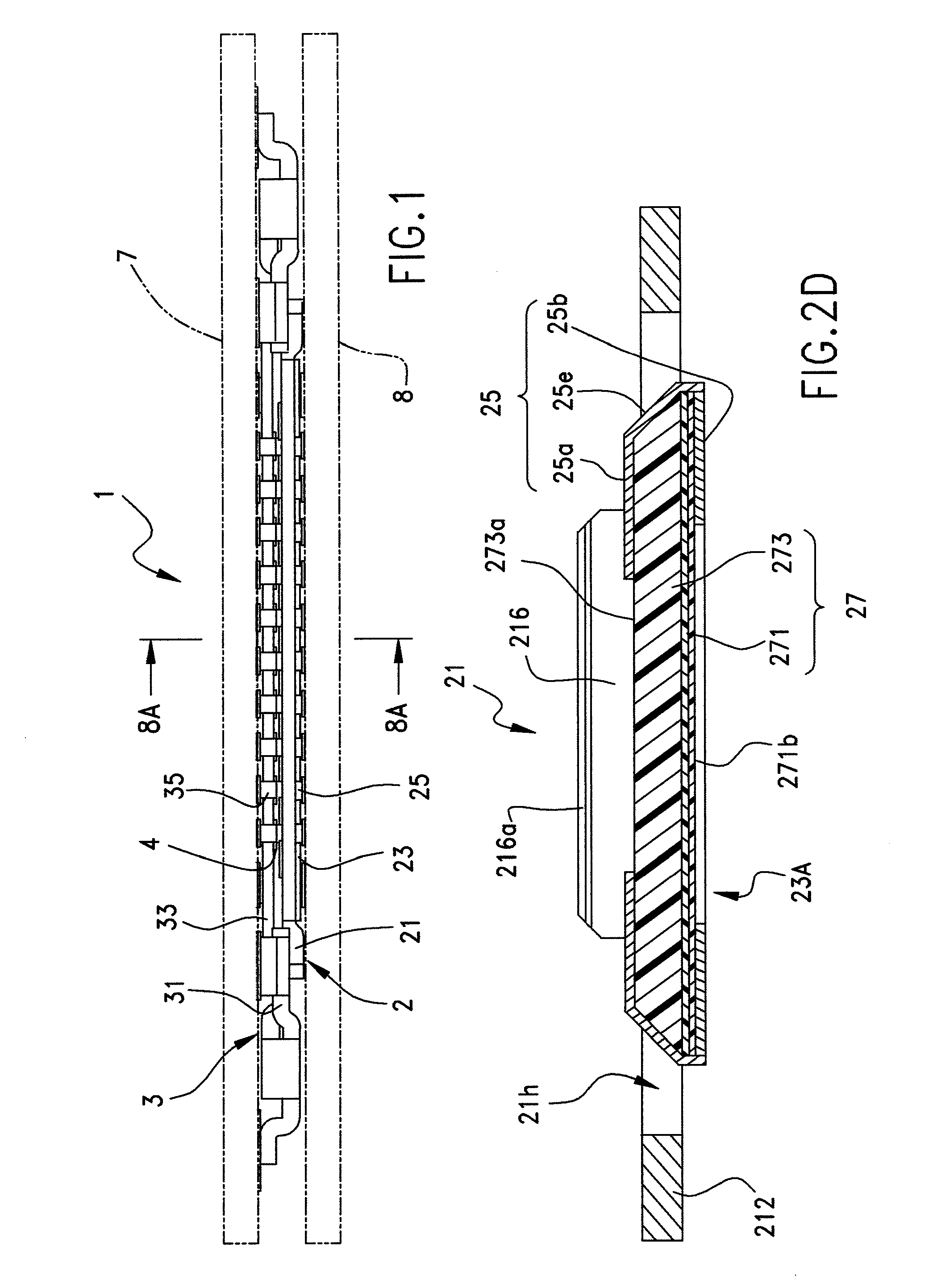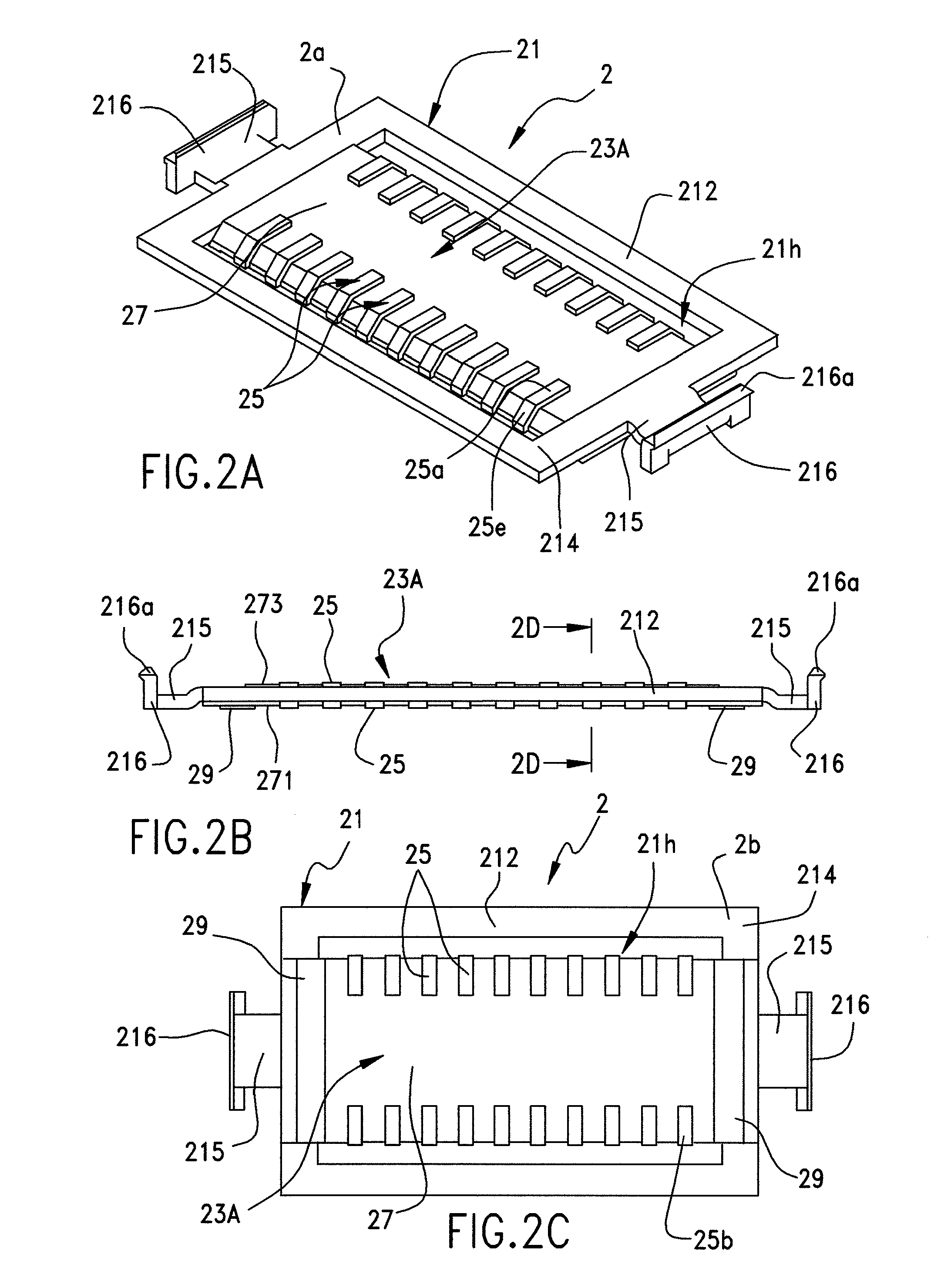Elastic-cushioned capacitively-coupled connector
- Summary
- Abstract
- Description
- Claims
- Application Information
AI Technical Summary
Benefits of technology
Problems solved by technology
Method used
Image
Examples
second embodiment
[0103]a terminal assembly 23B, is shown in FIGS. 12A-C and the assembly has a terminal formation body 26 attached to an elastic body 273 formed of silicone rubber or the like. The terminal formation body 26 has a first plate-like portion 274 and second plate-like portions 275 formed by resin sheets formed of polyimide or the like, and a plurality of first strip-like terminals 25 bridge therebetween. More specifically, on both lateral sides of the first plate-like portion 274, there are arranged the second plate-like portions 274 at a predetermined interval, and the first terminals 25 extend laterally from the first plate-like portion 274 to the second plate-like portions 275. The first terminals 25 are formed on terminal formation surfaces 274a, 275b of the first plate-like portion 274 and the second plate-like portions 275. Further, the first plate-like portion 274 has lining layers 274f lined with the first terminals 25 and extending together with them toward the second plate-like...
third embodiment
[0109]Next, a terminal assembly 23C is shown in FIGS. 16A-16C.
[0110]As shown in FIGS. 16A through 16C, in the terminal assembly 23C, a pair of first opposing conductor portions 25x of the plurality of first opposing conductor portions 25a have protrusions 251x protruding on the front side (the second opposing conductor portions 35a side). As shown in FIGS. 17A and 17B, of the plurality of second opposing conductor portions 35a, second opposing conductor portions 35x corresponding to the first opposing conductor portions 25x have no dielectrics portions 4. Thus, the first opposing conductor portions 25x and the second opposing conductor portions 35x are connected directly to each other with no dielectrics portions 4 formed therebetween. Further, since the protrusions 251x are provided on the first opposing conductor portions 25x, when the first and second connector frames 21, 31 are attached together, the amount by which the elastic member 27 is compressed by the first opposing condu...
PUM
 Login to View More
Login to View More Abstract
Description
Claims
Application Information
 Login to View More
Login to View More - R&D
- Intellectual Property
- Life Sciences
- Materials
- Tech Scout
- Unparalleled Data Quality
- Higher Quality Content
- 60% Fewer Hallucinations
Browse by: Latest US Patents, China's latest patents, Technical Efficacy Thesaurus, Application Domain, Technology Topic, Popular Technical Reports.
© 2025 PatSnap. All rights reserved.Legal|Privacy policy|Modern Slavery Act Transparency Statement|Sitemap|About US| Contact US: help@patsnap.com



